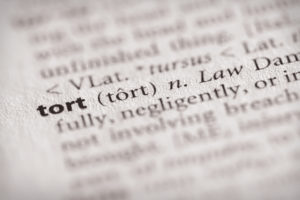A Pittsburg-based drug development company has received U.S. Food and Drug Administration (FDA) approval for phase 3 clinical trials of a product to treat severe, persistent pain. The medication, T-121, is being developed by Thar Pharmaceuticals and is expected to enter the market by 2019.
T-121 is an oral version of Novartis’ intravenous-only zoledronic acid, which is sold under the brand name Zometra. T-121 will be intended for patients suffering from complex regional pain syndrome/reflex sympathetic dystrophy (CRPS/RSD), a chronic pain condition often brought on by some sort of trauma. About 70,000 people across the U.S. experience pain from CRPS/RSD, which can become chronic over time and become a disabling condition.
Treatments for CRPS/RSD
There are many different types of treatments for CRPS and new ones come about relatively frequently, although what works for one does not usually work for another, making treating the condition all the more difficult.
Generally, the earlier CRPS is caught and treated correctly, the greater the chance that the condition will respond to medical treatment.
Although most doctors agree that a combination of diet, exercise, physical therapy, and medication is the best treatment of CRPS for most patients, exactly what that combination may be and which medications work best is a highly debated issue among pain management doctors.
There are no FDA-approved treatments for the pain of CRPS/RSD. Thar Pharmaceuticals developed the drug through the FDA’s orphan disease program, which allows for expedited review, tax credits and other competitive advantages for medications that help fewer than 200,000 people. CRPS/RSD affects fewer than 200,000 patients in the U.S. each year, according to the National Organization for Rare Disorders.

A trial lawyer for over 20 years, Bryan Pope is dedicated to fighting for justice while defending the rights of his clients. Bryan's influence often goes further—helping clients to navigate life-altering events and overwhelming grief. In addition to other areas of practice, Bryan specializes in helping sufferers of CRPS/RSD—a debilitating condition in which his in-depth knowledge enables him to lecture to other lawyers around the nation while also serving as a current chair for a CRPS/RSD organization.










7 Comments
Annette Merkley
I'm praying so hard that this medication works...
Stephen Rodrigues, MD
Since I graduated Medical School in 1983, finished my Family Practice Residency and past my board examinations, I have witnessed hundreds of patients fail to fully recover after knee, hip, shoulder and spinal surgeries for pain. Many of these patients were not even able to return back to work or were restored back to their prior states of well-being for work and play.
I wondered why they continued to suffering in pain despite countless referrals to specialist in internal medicine, pain management and surgical specialist. There was no viable data, evidence or information which could be used to help my patients out of pain.
My Awakening:
In the early 90s, one of my patients give me a pearl of wisdom from a heartfelt testimony. She confessed over and over how she could not live without her massage lady and chiropractor for support of her FM pain.
First Clues:
The only clues for this journey came from my patients as they negotiated the bewildering world of medicine. Many of my patient confessions to the benefits of massage, yoga, exercise, stretching, joint and spinal manipulations and chiropractic services. So I studies, reviewed and practice all aspect of these options and began to witness successes.
First stance:
In 1996, I simply decided that surgery for the treatment of pain was not a reasonable or logical choice to offer my family of patients. This started a journey into what really works for the treatment of pain.
What I now know for certain in this WOW factor summary:
Every pain problem known to mankind has been solved either with surgery, medications, physical therapy or with plain old common sense of pro-actions and prevention of injuries.
This means that the Muscular System is the #1 location of the pain we all feel within our bodies. The best set of restorative and preventive options, in the historical medical archives, fall into the treatments called Physical Therapy.
RSD is muscular and thus treated with these options:
Human touch manual stimulation: Kinesiology and Manipulation. Spinal Range of Motion Therapy, Continuous Passive Therapy, Acupressure and Soft Tissue Release.
Intramuscular needle stimulation IMNS:
IMNS w thin needles: Ah-Shi Chinese Acupuncture, myofascial acupuncture, GunnIMS and the Dry Needling.
IMNS w hypodermic needling: Muscle Wet (with lidocaine) Hypodermic Intramuscular Stimulative Needling aka Travell Trigger Point Injections.
So you see acupuncture is a form of physical therapy!!
I do not want to burst anyone's bubble but the answers are not in the future we have them already from the past.
This next question is why are they not being offered to you all???!!!
Godspeed
Dr Rodrigues
Mendie Storey
Sorry to inform you, Dr. Stephen Rodriguez, but any puncture into the skin of an RSD/CRPS patient may cause a flare. I have been dealing with this "Monster" for over 12 years. Agreeing that some of the methods you stated may help, but unless you have truly studied RSD/CRPS, you really don't know much about it. RSD/CRPS is a Neurological disorder, yes it affects the muscular system, it can eventually affect any patients systems since it can eventually go from Sympathetically involved only to Center nervous system involved. Since our central nervous system affects every aspect of our bodies it would only make sense that RSD/CRPS, can eventually affect any part/system in our bodies.
Thank you for this opportunity.
Roni Booth
Mendie, thank you for informing Dr. Rodriguez of how unimformed and completely wrong he is. It is physicians like him and so many others that have made it a nightmare for those of us with this disease due to their lack of understanding and assuming. The "its exagerrated and only in your head" attitude has to stop. It is real, it needs to be required education for every doctor, nurse, EMT and therapy provider in the US. It is the early diagnosis that is so crucial that is needed as well as the CDC thinking about the sufferers of not just CRPS but also chronic pain instead of making it nearly impossible for us to get relief. How does it go..true pain sufferers use medication to live some sort of life and do not become addicts..addicts use medication to avoid life.
Kelly urrutia
I suffer from c.r.p.s. i am 30 years old a mother of two children.my c.r.p.s. is in my upper extremities I have a metronic nuro spinal stimulator internally put in my back above my left hip. I already have broken leads . I was woundering if there is a trial drug to help with pain swelling deep neuropathy burning modeling .On missing function of my right arm hand muscle spasms. Any help would be a blessing .U live in Illinois
Nancy Gale
Kelly Urrutia, have you considered ketamine? I am glad to see comments correcting this "doctor". Just goes to show that's why t's called PRACTICING MEDICINE! They need to be like olympians and be impeccable in the field chosen, not dabble.
Stacey
Major flares after trying Accupuncture. More pain and disability every time. More $$$$ out the window.
If the CDC issues guidelines restricting meds, then they must force insurance and Medicare to fully reimburse alternative therapies too. Medicine works magic. Needles hurt!
Comments for this article are closed.